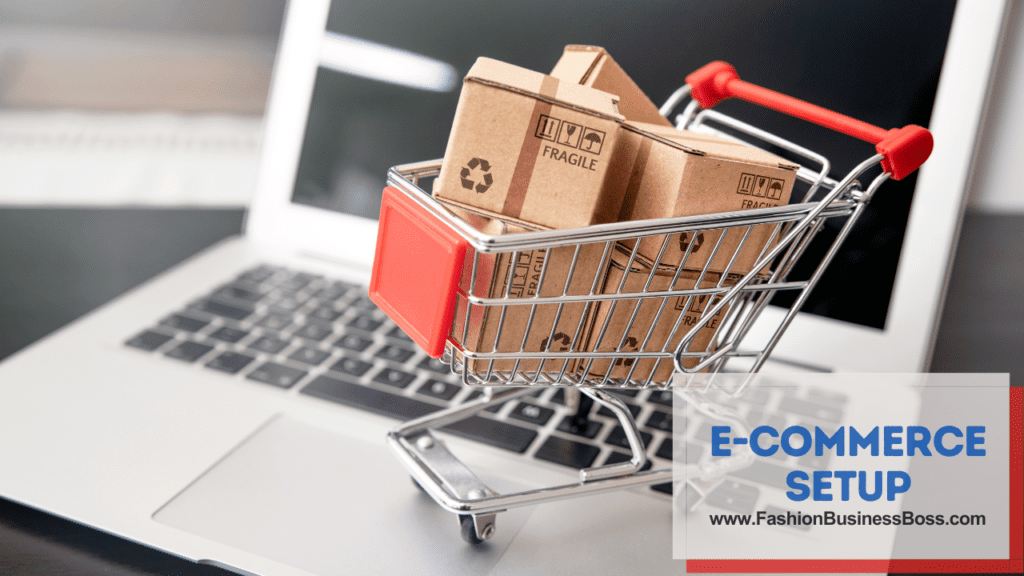Are you passionate about fashion and dream of turning your creativity into a thriving business? Starting a clothing business can be an incredibly great venture, but it also requires careful planning and execution.
Here are some essential steps for starting your clothing business: Define your niche, conduct market research, create a solid business plan, address legal requirements, source materials, focus on design, establish branding, manage production, set prices, go online, market effectively, optimize inventory, prioritize customer service, and plan for growth.
In this article, we’ll take you through the essential steps to transform your fashion dreams into a reality.
Define Your Niche

In the initial phase of starting your clothing business, it’s essential to determine your niche. A niche refers to the specific area within the clothing industry that you want to focus on. Do you want to create eco-friendly clothing, high-end fashion items, or trendy streetwear? Identifying your niche is important because it allows you to distinguish yourself from competitors and tailor your products to a particular audience.
For example, if you decide to specialize in sustainable fashion, you’ll concentrate on producing clothing that has minimal environmental impact. On the other hand, if luxury apparel is your chosen niche, you’ll design and market premium-quality clothing to a more affluent clientele. Alternatively, if you opt for streetwear, your designs will target a younger, fashion-forward crowd.
By clearly defining your niche, you’ll have a better understanding of your unique selling proposition, which sets you apart from others in the market. This focused approach enables you to connect with your ideal customers more effectively, ultimately increasing your chances of building a thriving clothing business.
Read more about: Clothing Manufacturing Cost Estimation: Navigating the Challenges
Market Research
Once you’ve determined your niche within the clothing industry, the next crucial step is conducting thorough market research. This process involves a comprehensive examination of your chosen market segment, and it’s a fundamental aspect of building a clothing business.
Firstly, it’s essential to conduct a competitor analysis. This means carefully studying your competitors – those who are already operating in your niche. You need to identify who they are, what products they offer, and how they go about marketing their clothing lines. By analyzing their strengths and weaknesses, you can gain valuable insights into the competitive landscape.
Secondly, staying updated on fashion trends and emerging styles is vital. Trends within your chosen niche can evolve rapidly, so keeping a close eye on what’s currently popular and what’s gaining traction is essential. This information will allow you to align your clothing designs with the preferences of your target audience.
Lastly, you should assess the demand for the type of clothing you plan to produce. Is there a significant demand for sustainable fashion, luxury apparel, or streetwear within your chosen market segment? Understanding the potential size of your target audience and their needs is crucial for making informed decisions about your business strategy, pricing, and marketing efforts.
Create a Business Plan
Developing a well-structured business plan is akin to charting a roadmap for your clothing venture. This plan is a critical document that outlines key aspects of your business and helps ensure that you stay on course. Here’s how to go about it:
Begin by defining your business goals. Clearly state what you aim to achieve with your clothing business. Do you aspire to become a recognized name in sustainable fashion, produce high-quality luxury apparel, or cater to a specific niche in streetwear?
Next, identify your target audience. Determine who your ideal customers are, understanding their preferences and needs. This knowledge is vital for tailoring your clothing products to meet their expectations effectively.
Lay out your marketing strategy. Describe how you intend to promote your clothing brand to reach your target audience. Will you employ social media, email campaigns, or partnerships with influencers?
Budgeting is another critical aspect. Detail your financial plan, including startup costs, operational expenses, and revenue projections. Having a clear budget ensures that you manage your finances wisely and sustainably.
Lastly, consider potential financial projections. While not a guarantee of earnings, these projections provide insights into how your business might perform in the future.
Legal Considerations

Ensuring that your clothing business operates within the bounds of the law is paramount. This involves several essential steps to establish your business as a legitimate entity:
Firstly, you must register your clothing business. This process varies by location, but typically, it involves providing your business name, location, and other pertinent details to the appropriate government authorities. Registering your business gives it legal recognition.
Next, you’ll need to select a suitable legal structure. Common options include sole proprietorship, limited liability company (LLC), or corporation. Each has its own set of advantages and responsibilities, so choose the one that aligns with your business goals and financial situation.
Obtaining the required licenses and permits is another crucial aspect. These permits ensure that your clothing business complies with local, state, and federal regulations. They can include sales tax permits, home occupation permits, and health department permits if your clothing items require specific safety standards.
Compliance with all relevant regulations is essential to avoid legal issues down the road. Failing to do so can result in fines or even the closure of your business.
Read more about: Clothing Line Tips: Dominate the Market
Sourcing Materials and Suppliers
The quality of materials you use is fundamental in crafting exceptional clothing. To achieve this, you’ll need to build strong connections with dependable suppliers who can provide you with the necessary fabrics, trims, and other materials.
Start by identifying potential suppliers who specialize in the materials you require. Look for suppliers known for their quality and reliability in delivering consistent materials. Reach out to them and establish a working relationship.
Negotiation plays a significant role here. Work out the pricing and terms of your materials to ensure they align with your budget while maintaining a competitive edge in the market. Carefully consider factors like minimum order quantities, payment terms, and delivery schedules.
Consistency in the quality of your materials is key. Reliable suppliers will help ensure that the materials you receive meet your standards consistently. This reliability is crucial for maintaining the quality and integrity of your clothing products.
Design and Development
The heart of your clothing business lies in the creative process of design and development. This step brings your ideas to life and ensures your clothing aligns with the desires of your target audience.
Start by transforming your concepts into tangible prototypes. These are initial samples or models of your clothing designs. Work closely with skilled pattern makers and craftsmen who can translate your vision into wearable garments. It’s a collaborative effort that requires clear communication to achieve the desired results.
Testing is vital. Evaluate your designs rigorously, considering aspects like fit, comfort, and style. These elements should resonate with your intended customers. Seek feedback from potential users, and be open to making necessary adjustments to enhance your clothing’s appeal.
It’s essential to maintain consistency in design and quality. This helps establish your brand identity and build trust with customers. Your clothing should reflect the values and aesthetics you want your brand to represent.
Branding and Logo Design

In the fashion industry, establishing a distinctive brand identity is of utmost importance. Your brand identity is the unique personality that sets your clothing business apart from others. To accomplish this, start by crafting a memorable brand name that resonates with your target audience and embodies the values and character you want your brand to convey.
Equally significant is the creation of a captivating logo. Your logo serves as the visual representation of your brand. It should be visually appealing, relevant to your clothing line, and effectively communicate the essence of your brand, its values, and identity.
Consistency is the linchpin of branding. Ensure that your brand name and logo remain consistent across all your marketing materials, from your website to social media profiles and even on clothing tags. This consistency strengthens your brand presence, making it easily recognizable and memorable to your customers.
Read more about: Clothing Line Tips: Dominate the Market
Production and Manufacturing
When it comes to producing your clothing, you have several options to consider. The choice you make here can significantly impact your business. Here’s how to navigate this critical step:
Firstly, think about the scale of your clothing business and your budget. This will help you decide on the most suitable production method. You can choose to produce your clothing in-house, which means you handle the manufacturing process yourself. Alternatively, you can work with local manufacturers, which can be cost-effective and allow for more control. Another option is outsourcing to overseas factories, which may be economical but requires careful management.
Whichever option you select, quality control is paramount. Ensure that every stage of production meets your standards. This includes the sourcing of materials, the manufacturing process, and the final product’s quality. Consistency in quality is vital to build trust with your customers and maintain the reputation of your clothing brand.
Pricing and Cost Analysis
Setting the right prices for your clothing is a crucial aspect of your business strategy. It involves thoughtful consideration of various factors to ensure your pricing aligns with your business goals. Here’s how to go about it:
Start by evaluating your production costs. Calculate how much it costs to make each clothing item, including materials, labor, and overhead expenses. This is your baseline cost that you must cover to ensure stability.
Next, study your competitors’ pricing. Analyze what similar clothing items are priced at in the market. This gives you insights into the price range that customers are willing to pay.
Consider the perceived value of your clothing. This means understanding how customers perceive the quality and uniqueness of your products. Higher quality or unique designs often command higher prices.
E-Commerce Setup

In the modern era, having an online presence is absolutely vital for your clothing business. This step involves creating an e-commerce website to exhibit your clothing collection and facilitate online sales. Here’s how to go about it:
Begin by setting up your e-commerce website. You can do this by either hiring a web developer or using e-commerce platforms like Shopify, WooCommerce, or BigCommerce, which simplify the process. Your website should serve as a virtual storefront where customers can view and purchase your clothing items.
Ensure that your website is user-friendly. This means organizing your product categories logically and making it easy for visitors to navigate. A smooth, hassle-free shopping experience keeps customers engaged.
Make sure your website is mobile-responsive, meaning it functions well on smartphones and tablets. Many customers shop using mobile devices, so this is crucial for reaching a broad audience.
Security is paramount. Your website must be secure for online transactions to protect customer information. Use secure payment gateways and encryption to ensure the safety of your customers’ data.
Read more about: Clothing Line Marketing Plan: From Ideas to Action
Marketing and Promotion
Promoting your clothing brand is a critical step in reaching your target audience and growing your business. To do this effectively, you’ll need a well-structured marketing strategy. Here’s how to approach it:
Begin by crafting a marketing strategy that incorporates various tactics. These may include social media marketing, email campaigns, and search engine optimization (SEO). Each of these methods serves a unique purpose in reaching and engaging with your potential customers.
Utilize social media platforms like Instagram and Facebook to showcase your clothing designs. These platforms allow you to visually display your products, share behind-the-scenes glimpses, and interact directly with your audience. Engaging content can pique interest and build a community of loyal customers.
Email campaigns are another powerful tool for reaching your audience. They enable you to stay in touch with customers, provide updates on new products, and offer special promotions. Building an email list allows you to nurture relationships with your customers over time.
Invest in SEO to improve your website’s visibility in search engine results. This helps potential customers find your website when they search for clothing items related to your niche.
Inventory Management
Effectively managing your inventory is a key component of running a smooth clothing business. This step involves keeping track of your clothing items to prevent situations where you either have too much or too little on hand. Here’s how to do it:
Start by understanding the importance of balancing your inventory. Overstocking can tie up your funds and lead to unsold items, while stockouts can result in lost sales opportunities and customer frustration. Finding the right balance is essential.
Consider using inventory management software. This specialized software helps you keep a close eye on your products. It allows you to track how many of each item you have, manage orders efficiently, and optimize your supply chain.
Regularly review your inventory to identify trends and patterns. This helps you anticipate demand and adjust your orders accordingly. You’ll want to avoid situations where you run out of popular items or end up with excess stock of items that aren’t selling well.
Customer Service

Providing outstanding customer service is a fundamental aspect of your clothing business. It’s about creating positive experiences for your customers, building trust, and encouraging loyalty. Here’s how to approach it:
First and foremost, be responsive to your customers. Promptly answer their inquiries and address their concerns. Being attentive and helpful goes a long way in creating a positive impression.
Handle returns and exchanges professionally and courteously. Clear return policies and seamless processes can make customers feel more comfortable when making a purchase. This builds trust and shows that you stand behind your products.
Consider implementing a loyalty program. Such programs can reward repeat customers with discounts, special offers, or exclusive access to new products. Loyalty programs can help retain your existing customer base and encourage repeat business.
Remember that excellent customer service extends to all interactions with your customers, whether it’s in-person, over the phone, or online. It’s about making each customer feel valued and appreciated.
Read more about: Clothing Line Consultant: Elevate Your Brand’s Style
Scaling Your Business
As your clothing business experiences growth, it’s important to consider strategies for expansion that align with your evolving goals. One avenue to explore is the establishment of physical retail stores. These brick-and-mortar locations can provide a hands-on shopping experience for customers who prefer in-person interactions. When selecting store locations, it’s crucial to target areas that resonate with your brand’s identity and cater to your specific demographic.
Another approach is to collaborate with social media influencers. These individuals have dedicated followings that trust their opinions and recommendations. Partnering with influencers can help increase your brand’s visibility, expanding your reach to a broader audience in the digital realm.
Conclusion
Starting a clothing business requires dedication, creativity, and a keen business sense. By following these steps and staying true to your vision, you’ll be well on your way to creating a clothing brand that stands out in the fashion world. Good luck with your entrepreneurial journey.
Frequently Asked Questions

Q: How can one determine the appropriate niche for a clothing business?
A: The process of finding the right niche involves conducting market research to identify gaps and trends. It also entails considering the business owner’s interests and the needs of the target audience to define a unique selling proposition.
Q: What legal considerations are important when starting a clothing business?
A: Key legal considerations when launching a clothing business include business registration, selecting an appropriate legal structure, obtaining necessary permits and licenses, and ensuring compliance with local, state, and federal regulations.
Q: What are effective marketing strategies for promoting a clothing brand?
A: Effective marketing strategies for promoting a clothing brand include utilizing social media marketing, email campaigns, search engine optimization (SEO), and collaborating with influencers. These approaches can help in establishing a strong online presence and engaging with the target audience, ultimately enhancing brand recognition and driving sales.
To learn more about starting your own clothing business, check out my startup documents here.
Please note that the contents of this blog are for informational and entertainment purposes only and should not be construed as legal advice. Any action taken based on the information provided in this blog is solely at your own risk. Additionally, all images used in this blog are generated under the CC0 license of Creative Commons, which means they are free to use for any purpose without attribution.

Meet Shawn Chun: Entrepreneur and Fashion Business Fan.
I’m a happy individual who happens to be an entrepreneur. I have owned several types of businesses in my life from a coffee shop to an import and export business to an online review business plus a few more and now I create online resources for those interested in starting new ventures. It’s demanding work but I love it. I do it for those passionate about their business and their goals. That’s why when I meet a designer or boutique owner at a craft fair, farmers market, retail location or anywhere else I see myself. I know how hard the struggle is to retain clients, find good employees and keep the business growing all while trying to stay competitive.
That’s why I created Fashion Business Boss: I want to help fashion business owners like you build a thriving business that brings you endless joy and supports your ideal lifestyle.

